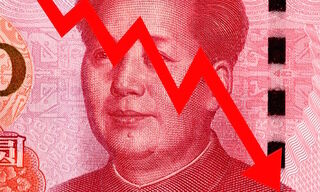China, Japan and India take centre stage in the second white paper on the world's four largest economies, BNY Mellon cautions against "premature pessimism", arguing that it is too soon to conclude that global growth will disappoint over the rest of this decade.
The Federal Reserve's hesitation ahead of its closely-watched rate decision illustrates a sobering economic truth: the post-crisis recovery in the developed world has been underwhelming, even as the slowdown in emerging economies has been unsettling. Against this backdrop, it is tempting to accept mediocre growth as the "new normal".
"But just as the pre-crisis boom tempted people into overconfidence, the post-crisis slump may have lured people into premature pessimism," notes Simon Cox, BNY Mellon Investment Strategist.
"It is too early to say that the underwhelming growth of recent years constitutes a new trend. There is still a lot to play for."
Cox looks at Japan, America, China and India, the world's four biggest economies, by purchasing-power parity. Despite recent setbacks, this quartet is benefiting from some promising macroeconomic trends. Deflation is receding in Japan; inflation has eased in India; unemployment is declining in America; and despite China's stock market turmoil, its property market shows signs of stabilizing. BNY Mellon calls them the G4.
In its first white paper, BNY Mellon argued that the G4 had substantial "room to recover" as demand revives. The second white paper turns from demand to supply, looking at how the G4's productive capacity will evolve until 2020. It pays close attention to workforce trends, capital accumulation and productivity gains – the ultimate "sources of growth".
Highlights include:
Labour: Many people believe that labor shortages will bedevil China and doom Japan. Contrary to popular belief, however, demographics is not destiny. China's working-age population grew by only 0.5 percent from 2010 to 2014. Yet that did not stop its GDP growing by over 35 percent over the same period. While China's working-age population is now falling, the decline will be fairly gentle over the next five years and may even pause in 2019-2020, because the cohort retiring at that time is unusually small. Economic recovery has also trumped demographic decline in Japan, where employment has actually increased over the past five years.
Capital accumulation: In Japan, America and India, investment in new capital has been lackluster in recent years. That has left a backlog of necessary capital expenditures that should yield decent returns as economies revive. In the U.S. private fixed assets are now the oldest they've been since the 1950s. Even in China, notorious for its "overcapacity", there is considerable scope for further capital spending. China's stock of capital per person is still small, leaving many areas of "undercapacity".
Technology: Some technophiles believe we are in the midst of a third industrial revolution which will yield driverless cars, artificial minds and refurbishable bodies. But brisk technological progress has yet to translate into rapid economic gains. To boost output per worker, improved technologies have to be widely deployed by firms. That requires investment. The technological revolution may, therefore, become an economic revolution only when capital formation finally booms. China and India, for their part, still have great scope to enjoy "catch-up growth", benefiting from technologies that are not new to the world, but are new to them. This progress will not be interrupted by the "middle-income trap", Cox argues, because such a trap is largely a myth.




















